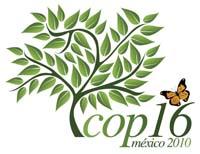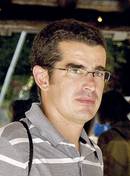Cancun climate meeting: moderate success

At the beginning of the Cancun meeting, it was known that a binding agreement could not be reached and hope dropped sharply from the previous Copenhagen meeting. However, when defining the outcome of the meeting, it can be said that it has been moderately successful considering the context of the meeting. The reader should be aware that the scope of the agreements and advances that can be reached at these meetings is limited, since there are almost more than two hundred negotiating agents (countries), and the texts presented for debate are defined and discussed rigorously before giving formal approval.
Agreements
On 11 December 2010, taking advantage of the last minutes of the meeting, the representatives present in Cancun (except Bolivia) approved a package of decisions called “Cancun Agreements”. These agreements advance some key aspects of climate negotiations. Below is a summary of the main decisions:
1. It has been determined -- for the first time officially in the United Nations -- that the increase in average temperature should not exceed 2ºC. The Copenhagen Accord (COP-15) proposed such an agreement (or “collected in writing”), but the United Nations did not accept it.
2. Country emission reduction plans for 2020 after the Copenhagen meeting are officially approved. Countries that have proposed voluntary reductions (around 80 countries) are primarily responsible for emissions, such as China, the United States, the European Union, India and Brazil. Many developing countries, without commitment to emissions control in the Kyoto Protocol, have for the first time committed to making an effort to control their emissions and energy intensity in their economies. This is a good step towards achieving the goal of not exceeding 2ºC of average temperature, since most of the emissions come from these countries. However, with current commitments, this 2ºC target cannot be met. Global emissions will be reduced by 11-16% by 2020 (compared to 1990 emissions), but the IPCC believes they should be reduced by 25-40%.
3. Country emission monitoring and verification mechanisms (known as MRV) have been agreed. These mechanisms could not be accepted in Copenhagen because some countries did not want an audit, but these suspicions have been overcome in part in Cancun. According to the agreement, countries will submit their emissions inventories to a group of independent experts who, following the recommendations of the agreement, will monitor and verify emissions reductions.
4th The second negotiations of the Kyoto Protocol remain open. Some key countries have already announced that they will not participate in a second phase of the Kyoto Protocol unless the United States, including Japan and Russia, is involved, and Australia and Canada are expected to remain behind. However, this decision will be taken at COP-17 in Durban, South Africa in 2011.
5. For the period 2010-2012, US$30 billion of transfer and US$100,000 per year have been agreed until 2020 to help developing countries reduce their emissions and adapt to the agreement. Since the Copenhagen meeting, countries have formalized their contribution commitments to reach those figures. These figures will be a combination of public and private funding (carbon markets).
6th The procedure for the implementation of a Green Climate Fund has been defined. This fund, which is not related to point 4, will have a balanced representation of developing and developed countries, and will be initially managed by the World Bank.
7. The role of clean development mechanisms and other market mechanisms is reinforced. This introduces the novelty that carbon credits can be obtained through carbon capture and storage (CCS) projects.
8th. An adaptation framework has been approved and progress has been made on forest protection and technology transfer. Through the REDD+ mechanism (“Reduced Deforestation and Forest Degradation”) they will contribute to the conservation of forests in developed countries through mechanisms that include market mechanisms. Bear in mind that two-thirds of emissions from developing countries come from deforestation and forest degradation. On the other hand, the agreement has defined a Climate Technology Center and Network that unifies the supply and demand of low-carbon technologies.
Global valuation
Taking into account the global economic crisis in which most developed countries live and, above all, taking into account that following the low outcome of the Copenhagen meeting (COP 15) and the controversial organization, the United Nations Framework Agreement on Climate Change (UNFCCC) was questioned, the Cancun agreement can be considered an important step.
In fact, significant progress has been made on issues as important as those mentioned above (especially for many developing countries). This breakthrough opens the door to achieving binding and ambitious emission reduction targets at the Durban meeting. The road until then is long and both the current presidency (Mexico) and the future presidency (South Africa) will have to take advantage of their capabilities to achieve this goal and prepare the appropriate context to achieve better and more ambitious agreements.
Climate change continues to require numerous actors in areas of action outside the United Nations negotiating process – from all stakeholders, from all levels of government, etc. – to contribute decisively to emissions reduction and adaptation to climate change. But the process within the UNFCCC remains a fundamental part of the solution. The COP 17 meeting will be able to take advantage of it and increase the moderate success of the Cancun meeting!








